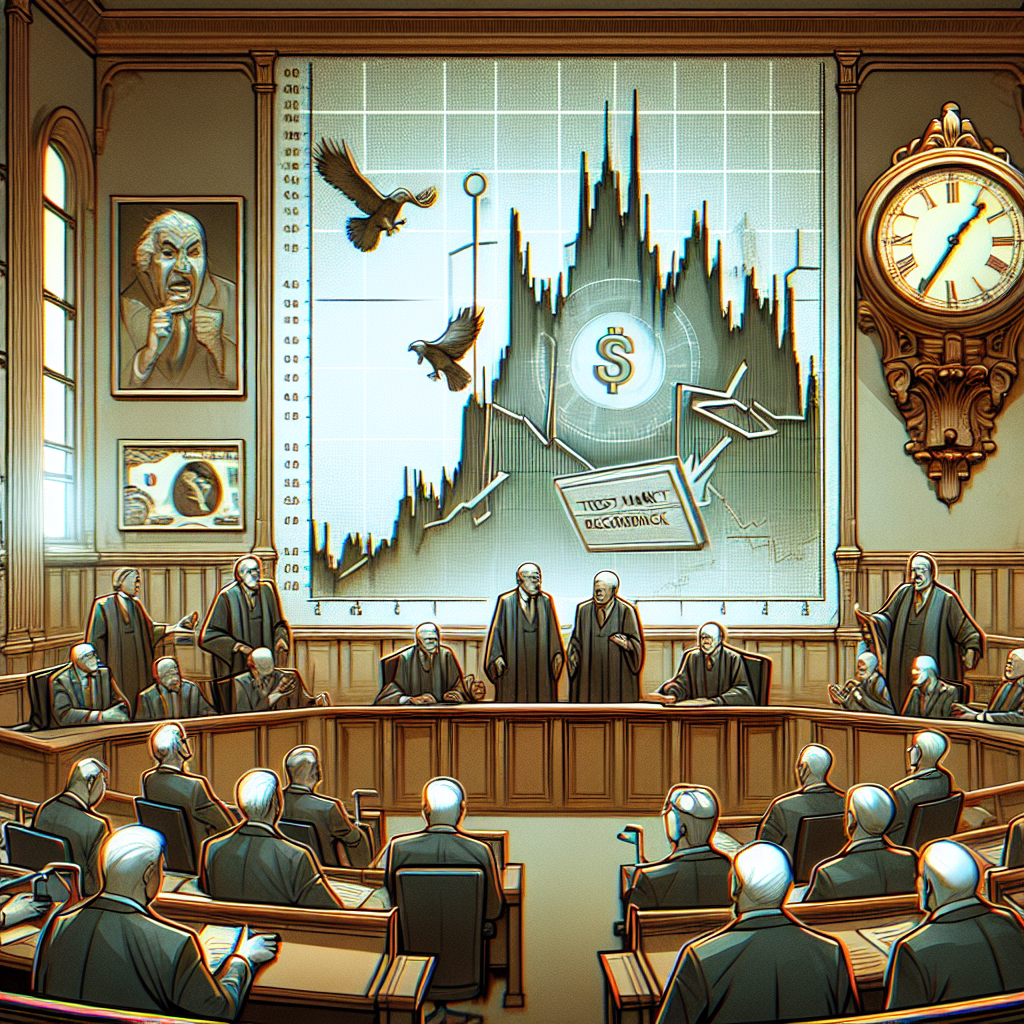On Wednesday, November 5th, the United States Supreme Court held oral arguments regarding the legality of the tariffs imposed by the Trump administration, causing market fluctuations. The stock market stopped its decline and rebounded, precious metals strengthened, bonds were sold off, and this led to an increase in government bond yields.
The Supreme Court justices expressed doubts about the legality of the tariffs under the International Emergency Economic Powers Act. If the final ruling deems President Trump’s designated tariff policies illegal and invalid, the potential scale of tariff refunds could reach hundreds of billions of dollars, drawing widespread attention from investors.
After the debate, the stock market saw a limited rebound, with bond markets experiencing selling pressure that pushed government bond yields higher. Precious metals recorded moderate gains as a safe haven asset.
Wall Street anticipates that this case could become the biggest legal and policy upheaval faced by the Trump administration, with its economic consequences likely to manifest in the coming months.
The focus of the Supreme Court hearing was whether the White House has the authority to exercise tariff powers under the International Emergency Economic Powers Act. While the law allows the president to regulate international trade, it does not specifically authorize the formulation of tariff policies.
It is not expected for the justices to hastily make a ruling, so any impacts may take months to materialize. However, market speculations triggered by this event have already started to proliferate.
For example: Will the Supreme Court completely abolish these tariffs and compel the government to refund importers who have already paid tariffs? Will it allow these levies to continue, thereby expanding the executive branch’s power in trade matters? Or will it find a middle ground, perhaps maintaining certain tariffs such as punitive tariffs against countries identified as fentanyl producers while abolishing others?
Wall Street is preparing for such outcomes, with expectations of wide-reaching effects, although the extent remains uncertain.
As of the market close on November 5th, all three major US stock indices recorded gains. The S&P 500 index fluctuated upwards during the day, rising 1.2% to around 5,920 points (compared to the previous close of 5,850 points).
Technology and consumer sectors led the gains, benefiting from expectations of reduced import costs, while industrial and manufacturing stocks slightly retreated due to uncertainty surrounding domestic protection policies.
The Dow Jones Industrial Average rose by 0.8%, closing at 42,100 points. The index was supported by financial and energy stocks, although trade-sensitive stocks like Boeing and Caterpillar experienced larger fluctuations.
The Nasdaq Composite index performed the best, gaining 1.5% to close at 18,800 points. AI and tech giants (such as NVIDIA) drove the rebound. Market interpretation suggests that the Federal Reserve may maintain loose policies to address tariff uncertainties.
Wall Street analysts attribute the stock market rally primarily to a “return in risk appetite,” but trading volume was lower than average, indicating that most investors are still cautious.
Stephen Juneau, an economist at Bank of America, stated in a report, “The Supreme Court’s decision could amplify inflation and Fed policy fluctuations, but the short-term removal of tariffs would benefit growth. If tariffs are maintained, the S&P 500 is expected to retrace by 5%-10%.”
As a hedge against geopolitical trade risks, precious metals strengthened following the Supreme Court debate. Global uncertainties have boosted demand for safe-haven assets, with gold prices moving towards the mid-term target of $3,000 per ounce. If the court ruling is unfavorable to the Trump administration, precious metal prices could further rise by 2%-5%.
Following the debate, the US dollar index slightly retreated, while the 10-year Treasury yield rose to 4.25% (an increase of 8 basis points), reflecting bond sell-offs. In the foreign exchange market, the euro/dollar pair rose by 0.4%.
Meanwhile, Trump administration officials assert that even if they lose in the Supreme Court, there are other legal provisions that can be used to enforce tariffs.
Artificial intelligence analysis firm Reflexivity mentioned that if the Trump administration loses, imported consumer goods, small businesses, construction, and technology will be the winners, while domestic manufacturers will be the losers. If the government wins, non-durable goods manufacturers and protected industries like steel and aluminum will benefit.
What will happen next? Traders on Polymarket believe that there is only a 26% probability of Trump’s tariffs being maintained, raising additional questions. One of the most important issues will be whether the court will take further action to compel the government to refund paid tariffs.
In the 2025 fiscal year, the US collected approximately $195 billion in customs tariffs, more than doubling the total from the previous year. Refunds could exacerbate government budget deficit pressures.

